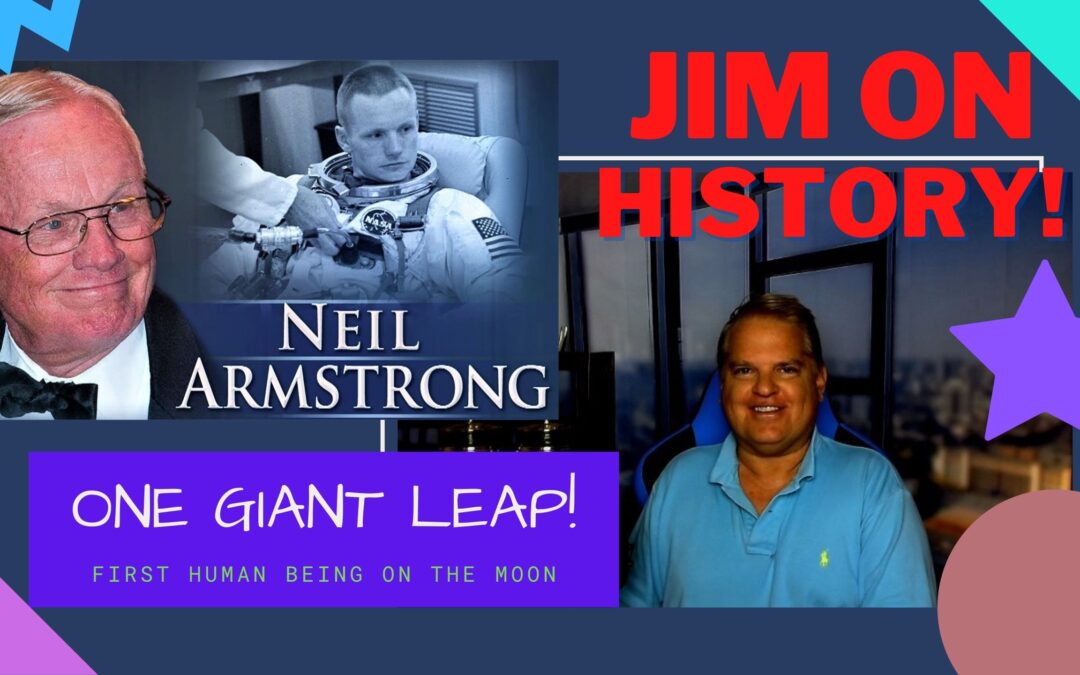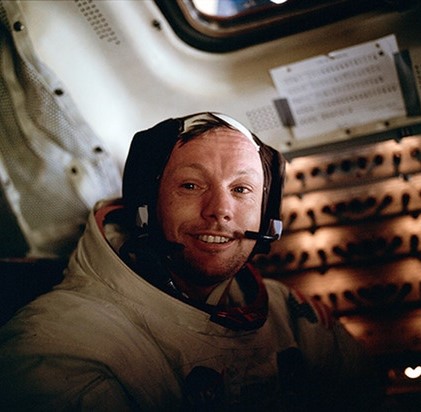Fifty years ago, human beings landed and stepped on the moon for the first time.
Some 650 million people around the world watched the historic landing on July 20, 1969, and heard astronaut Neil Armstrong say:
“That’s one small step for man, one giant leap for mankind.”
The legacy of that mission — and all the Apollo missions — is immense.
For one, it was a huge engineering accomplishment to get humans to the moon and back.
“It took around 400,000 people to land humankind on the moon,” said astronaut Michael Collins, Apollo 11’s command module pilot.
Those were engineers, coders, scientists, mechanics, doctors, and so many more professions working in concert to make the mission a success.
WATCH: Jim on History, One Giant Leap:
The astronauts were launched aboard the largest rocket ever built, the Saturn V. Once launched into space, they then had to essentially reassemble the spacecraft mid-flight to the moon.
Then that spacecraft had to enter orbit around the moon.
There, Buzz Aldrin and Armstrong boarded a lunar lander and descended to the surface, where they spent 21 hours and 26 minutes.
After, they had to come back.
But it was more than just an engineering victory.
Bringing back samples from the surface of the moon led to many stunning discoveries, and new hypotheses about the history of our solar system.
“Before Apollo, we really did not know how the moon formed,” says Juliane Gross, a planetary scientist at Rutgers University.
For planetary scientists, research on lunar samples is invaluable.
Moon rocks serve as a time capsule of the solar system.
From this time capsule, we learned that the moon was likely formed when a Mars-size object slammed into an early version of the Earth, forming the moon out of an ocean of magma left in the wake of the cataclysm.
And there’s still more to learn if we were to go back.
But if humans are going to become an interplanetary species, with outposts on the moon and Mars, we’re going to have to learn to live in space.
The moon, just a three-day journey away, is a great place to do that.
Armstrong’s first step was at 10:56:20 pm ET.
“It took place 238,000 miles out in space, yet it was shared by hundreds of millions of people on earth,” said Richard Salant, the president of CBS News at the time.
“The step on the moon was an awesome achievement; so was its reporting on television because it emphasized television’s extraordinary ability to unify a disparate world through communicating with so many people, in so many places, and thus providing them with a common — and an extraordinarily satisfying –experience.”
Salant, writing on behalf of CBS, wrote that Apollo 11 “ranks as the single most satisfying effort in our collective experience as journalists. All too often, we are forced to report man’s shortcomings. In this instance, from the moment of blast-off to the moment of splashdown we were continually conscious of being involved in one of the great triumphs of the human spirit.”
“We went to the moon on television.” That’s the lead on a column by LA Times critic Robert Lloyd.
Television rallied support for NASA, TV newsmen educated Americans about space, and the space program provided a bounty of dramatic programming for the broadcast networks.
“Television pictures afforded the audience the virtual sensibility of being there with Armstrong,” James R. Hansen wrote in his Armstrong biography “First Man.”
Without the pictures, “the human experience of the First Man’s first step” would have been “very different.
This is how Walter Cronkite signed off on July 24, after four hours covering the splashdown of the astronauts:
“Well, man’s dream and a nation’s pledge have now been fulfilled. The lunar age has begun. And with it, mankind’s march outward into that endless sky from this small planet circling an insignificant star in a minor solar system on the fringe of a seemingly infinite universe. The path ahead will be long; it’s going to be arduous; it’s going to be pretty doggone costly. We may hope, but we should not believe, in the excitement of today, that the next trip or the ones to follow are going to be particularly easy. But we have begun with ‘a small step for a man, a giant leap for mankind,’ in Armstrong’s unforgettable words.
“In these eight days of the Apollo 11 mission the world was witness to not only the triumph of technology, but to the strength of man’s resolve and the persistence of his imagination. Through all times the moon has endured out there, pale and distant, determining the tides and tugging at the heart, a symbol, a beacon, a goal. Now man has prevailed. He’s landed on the moon, he’s stabbed into its crust; he’s stolen some of its soil to bring back in a tiny treasure ship to perhaps unlock some of its secrets.
“The date’s now indelible. It’s going to be remembered as long as man survives — July 20, 1969 — the day a man reached and walked on the moon. The least of us is improved by the things done by the best of us. Armstrong, Aldrin and Collins are the best of us, and they’ve led us further and higher than we ever imagined we were likely to go.”

